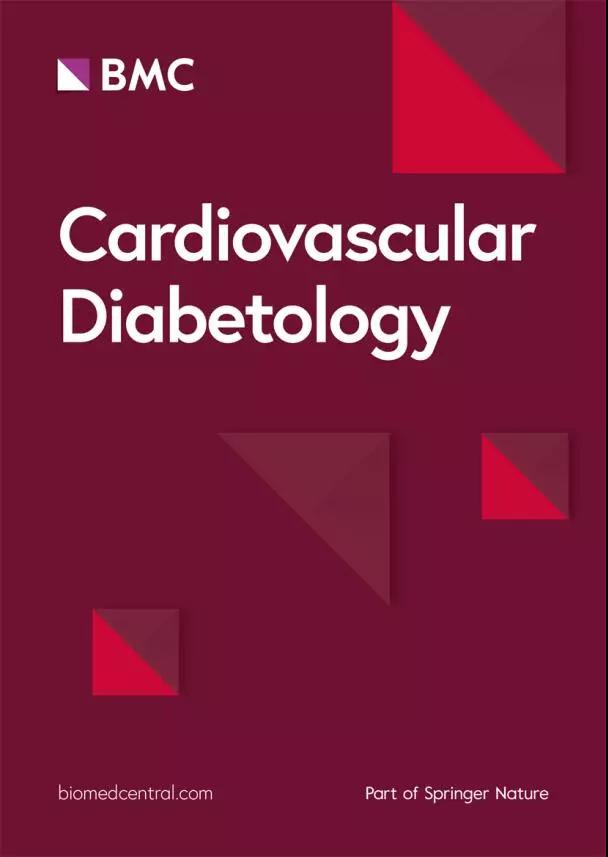Association between atherogenic index of plasma and all-cause mortality and specific-mortality: a nationwide population‑based cohort study
IF 8.5
1区 医学
Q1 CARDIAC & CARDIOVASCULAR SYSTEMS
引用次数: 0
Abstract
Atherogenic index of plasma (AIP), a marker of atherosclerosis and cardiovascular disease (CVD). However, few studies have investigated association between AIP and all-cause mortality and specific-mortality in the general population. This study included data from 14,063 American adults. The exposure variable was the AIP, which was defined as log10 (triglycerides/high-density lipoprotein cholesterol). The outcome variables included all-cause mortality and specific-mortality. Survey-weighted cox regressions were performed to evaluate the relation between AIP and all-cause mortality and specific-mortality. Weighted restricted cubic spline was conducted to examin the non-linear relationship. During 10 years of follow-up, we documented 2,077, 262, 854, and 476 cases of all-cause mortality, diabetes mortality, CVD mortality and cancer mortality, respectively. After adjustment for potential confounders, we found that atherogenic index of plasma (AIP) was significantly associated with an increased risk of diabetes mortality when comparing the highest to the lowest quantile of AIP in female (p for trend = 0.001) or participants older than 65 years (p for trend = 0.002). AIP was not significantly associated with all-cause mortality, CVD mortality and cancer mortality (p > 0.05). Moreover, a non-linear association was observed between AIP and all-cause mortality in a U-shape (p for non-linear = 0.0011), while a linear relationship was observed with diabetes mortality and non-diabetes mortality (p for linear < 0.0001). In this study, there is a no significant association between high AIP levels and a high risk of all-cause and cardiovascular mortality. Besides, a higher AIP was significantly associated with an increased risk of diabetes mortality, which only found in women older than 65 years. AIP was associated with all-cause mortality in a U-shape. This association could be explained by the finding that higher AIP predicted a higher risk of death from diabetes, and that lower AIP predicted a higher risk of death from non-diabetes causes.血浆致动脉粥样硬化指数与全因死亡率和特定死亡率之间的关系:一项基于全国人口的队列研究
血浆致动脉粥样硬化指数(AIP)是动脉粥样硬化和心血管疾病(CVD)的标志物。然而,很少有研究调查 AIP 与普通人群全因死亡率和特定死亡率之间的关系。这项研究包括来自 14,063 名美国成年人的数据。暴露变量为 AIP,定义为 log10(甘油三酯/高密度脂蛋白胆固醇)。结果变量包括全因死亡率和特定死亡率。为评估 AIP 与全因死亡率和特异性死亡率之间的关系,进行了调查加权 cox 回归。此外,我们还采用了加权限制立方样条来检验非线性关系。在 10 年的随访中,我们分别记录了 2,077 例、262 例、854 例和 476 例全因死亡率、糖尿病死亡率、心血管疾病死亡率和癌症死亡率。在对潜在的混杂因素进行调整后,我们发现血浆致动脉粥样硬化指数(AIP)与女性(趋势 p = 0.001)或 65 岁以上参与者(趋势 p = 0.002)的 AIP 最高量级与最低量级相比,与糖尿病死亡风险的增加显著相关。AIP 与全因死亡率、心血管疾病死亡率和癌症死亡率无明显关联(p > 0.05)。此外,AIP 与全因死亡率呈 U 型非线性关系(非线性关系的 p = 0.0011),而与糖尿病死亡率和非糖尿病死亡率呈线性关系(线性关系的 p <0.0001)。在这项研究中,AIP 水平高与全因死亡率和心血管死亡率高风险之间没有明显关联。此外,AIP 水平越高,糖尿病死亡风险越高,但这只存在于 65 岁以上的女性中。AIP与全因死亡率的关系呈U型。这种关联可以解释为,AIP越高,糖尿病死亡风险越高;AIP越低,非糖尿病死亡风险越高。
本文章由计算机程序翻译,如有差异,请以英文原文为准。
求助全文
约1分钟内获得全文
求助全文
来源期刊

Cardiovascular Diabetology
医学-内分泌学与代谢
CiteScore
12.30
自引率
15.10%
发文量
240
审稿时长
1 months
期刊介绍:
Cardiovascular Diabetology is a journal that welcomes manuscripts exploring various aspects of the relationship between diabetes, cardiovascular health, and the metabolic syndrome. We invite submissions related to clinical studies, genetic investigations, experimental research, pharmacological studies, epidemiological analyses, and molecular biology research in this field.
 求助内容:
求助内容: 应助结果提醒方式:
应助结果提醒方式:


